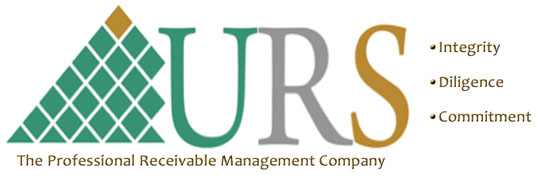Wednesday
5. Denials management
"Efficient billing and collections processes are critical components of a successful and profitable medical practice. Yet most practices leave between 5 percent and 30 percent of their reimbursement on the table because they lack proper processes, staffing, training or technology. Industry experts say the first 80 percent of payments are relatively easy to collect. It's the next 20 percent that are harder to obtain and more expensive to collect. Follow these recommendations and regain control of your billing operations..."
Understanding the issues surrounding a denial is critical to rectifying the situation and obtaining payment. Denials management is often a neglected area due to the labor involved and intrinsic knowledge needed. A dedicated team should be assigned to posting and follow-up for denials. Trends in payer reimbursement can be identified and addressed. Try to target problem areas that affect the bottom line to obtain maximum reimbursement for all services provided. Managing the process can be time-consuming and difficult, but it is essential to optimizing cash collections.
Tuesday
5 Tips to Improve your Medical Practice's Billing & Collections
"Efficient billing and collections processes are critical components of a successful and profitable medical practice. Yet most practices leave between 5 percent and 30 percent of their reimbursement on the table because they lack proper processes, staffing, training or technology. Industry experts say the first 80 percent of payments are relatively easy to collect. It's the next 20 percent that are harder to obtain and more expensive to collect. Follow these recommendations and regain control of your billing operations..."
4. Remittance management and payment posting
Retrieval and processing of claims should be done with electronic remittances from government and large commercial payers whenever possible. Automating this process reduces human error and highlights claims that need additional follow-up. The combination of electronic remittance advice and electronic funds transfer puts money into your account quicker and allows timely billing of secondary claims.
Catching up? Here are the previous discussions:
1. Verification of benefits and patient registration
2. Medical Coding
3. Charge Validation
Marketing Your Practice
When was the last time the owners of the office collaborated and seriously put forth a marketing plan designed to attract more patients to the practice? In many practices, physicians are very busy seeing and treating their patients and getting paid. Practices which employ administrators to help manage personnel and financial matters are, too, inundated reading and deciphering 5010 coding and recent complicated Federal and state legislation issues.
Designing medical practice marketing plans requires time, energy, purpose and expertise. Practices should first review reasons why patient volume is declining and why patients remain faithful to the practice. Reasons for either case might include the practice’s referral base or patients who refer neighbors and co-workers or a physician’s lackluster bedside manner. Other reasons could result from fewer insurance participations or a highly transient geographical area. But no matter the reason(s), patient surveys should be an integral part of everyday business along with statistical tracking all variables and they should be carefully monitored for appropriate actions.
The first step is making sure the practice’s insurance participation status is listed as a participating provider. Solo practices are particularly vulnerable, as some managed care plans will only contract with group practices.
Suggestions for Developing a Marketing Plan for Your Practice
Communicating with Patients
- Understanding the importance of the practice – What is unique, accomplishments about the practice or physicians
- Establish Target to a specific destination – Where do you see the practice – the target and market positions of practice
- Develop Marketing Plan (Goals, Objectives, Target(s), Expertise, Budget, etc.)
- Achieve High Levels of Efficiency – Patients seek high quality of care with fewest mistakes and waiting times – improve cash flow and profitability
- Utilize / Promote use of Website / Accessibility – patient data resources – scheduling
5 Tips to Improve your Medical Practice's Billing & Collections
3. Charge validation
Prior to submission, claims should be scrubbed by an industry-specific tool that uses standard and custom edits. The system should automatically detect coding combinations related to un-bundling, modifier appropriateness and mutually exclusive procedures. Medical necessity concerns can be discovered and proper channels exercised to improve or amend documentation.
What are your thoughts on how this process should be completed?
5 Tips to Improve your Medical Practice's Billing and Collections
"Efficient billing and collections processes are critical components of a successful and profitable medical practice. Yet most practices leave between 5 percent and 30 percent of their reimbursement on the table because they lack proper processes, staffing, training or technology. Industry experts say the first 80 percent of payments are relatively easy to collect. It's the next 20 percent that are harder to obtain and more expensive to collect. Follow these recommendations and regain control of your billing operations..."
2. Medical coding
Certified professional coders should handle coding to ensure that it's proper, the first time. Missed or improper codes can equate to thousands of un-billed dollars and expose you to potential liability and compliance issues. Auditing consultants or firms hired annually can help ensure accurate and complete claims and coding functions.Now, explain how you make this a priority or reasons you are having difficulty completing this task!
source:mgma.com
Subscribe to:
Comments (Atom)
